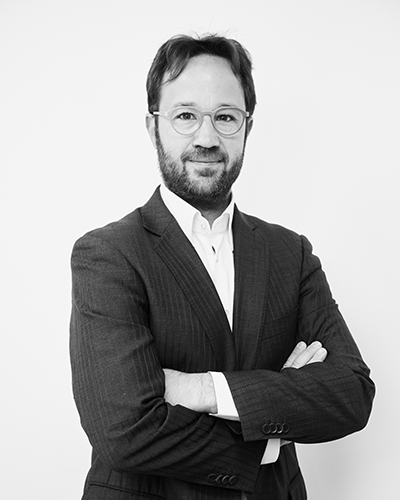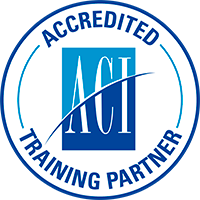- Definition and Scope of Advanced Air Mobility (AAM).
- History and Evolution of Urban and Regional Air Mobility.
- Key Stakeholders in AAM: Public and Private Sectors.
- Current AAM Technologies and Trends.
- Challenges and Future Potential for AAM.
Master in Advanced Air Mobility (MAAM) in Aviation Management e-learning modality
The Master in Advanced Air Mobility (MAAM) is an executive MBA program meticulously designed for professionals eager to lead the transformation of air transport through cutting-edge Advanced Air Mobility (AAM) technologies and business strategies. As the aviation industry moves towards a new era of sustainable, efficient, and technology-driven mobility, this program provides participants with the critical knowledge and leadership skills needed to navigate the complexities of this rapidly evolving sector.
With a strong emphasis on Urban Air Mobility (UAM), regional aviation, and next-generation airspace management, the MAAM program offers an in-depth exploration of the economic, regulatory, and operational challenges shaping the future of air transport.
Duration: 600 hours.
Starting date: Enrolment open.
Modality: e-learning.
Job bank management.
Required English level: at least B2.
The content of the Master's program
Unit 0: Introduction to Advanced Air Mobility (AAM)
Unit I: Urban Air Mobility and Infrastructure
- Urban Air Mobility (UAM): Concepts and Operations.
- AAM Infrastructure Requirements and Business Feasibility.
- Vertiports: Business Models and Economic Implications.
- Airspace Management for AAM Operations.
- Integration of UAM with Existing Transportation Systems.
- Environmental and Noise Impacts of AAM.
- Regulatory Challenges and Opportunities.
- Smart Cities and AAM Integration.
- Electrification and Sustainability in AAM Operations.
- Public Perception, Marketing, and Stakeholder Engagement.
- Safety, Security, and Certification as Business Enablers.
- Future Trends in UAM and Regional Mobility Infrastructure.
Unit II: AAM Vehicles and Technology
- Overview of AAM Vehicles: eVTOL, Drones, Hybrid-Electric Aircraft.
- Vehicle Design and Operational Efficiency.
- Electric Propulsion and Battery Technologies.
- Autonomous Systems: Opportunities and Business Risks.
- AI and Digital Systems for Operational Optimization.
- Manufacturing, Supply Chain, and Scaling Production.
- Airworthiness Certification and Its Impact on Market Access.
- Future Technology Developments: Forecast and Strategic Adaptation.
Unit III: Airspace Management and Navigation for AAM
- Airspace Requirements and Business Impact.
- Airspace Requirements and Business Impact.
- AI and Automation: Business Cases in Navigation.
- Integration with Traditional Aviation.
- Real-Time Data Sharing and Coordination.
- Environmental and Sustainability Considerations in Airspace Design.
- Risk Management and Insurance Models for AAM Airspace.
Unit IV: Business Models and Market Opportunities for AAM
- AAM Market Analysis: Segmentation and Growth Opportunities.
- Emerging Business Models: Passenger, Cargo, and Specialized Services.
- Economics of AAM: Cost Structures and Scalability.
- Funding Strategies and Investment Trends.
- Public-Private Partnerships (PPPs) and Funding Models.
- Role of Airports and Traditional Aviation.
- Regulatory Frameworks and Strategic Business Positioning.
- Fleet Management, Operational Efficiency, and Profitability.
- Sustainability as a Core Business Strategy.
Unit V: Policy, Regulation, and Sustainability for AAM
- Global Regulatory Frameworks and Market Access.
- Operational Certification and Commercial Implications.
- Public Policy, Urban Planning, and Business Integration.
- Environmental Impact and Business Strategies.
- Collaboration Between Industry, Regulators, and Governments.
- Ethics, Data Privacy, and Public Trust.
- Future Trends in Regulation and Market Adaptation.
Unit VI: Master’s Thesis.
- Individually, students must draft a Master Thesis consisting in the study of a subject related to the management of Advanced Air Mobility.
Who are you going to learn from?

Carlos Medrano
Ex-AENA’s former General Director

Javier Gándara
Easyjet’s General Director for southern Europe

María José Cuenda
Director General Commercial and Real Estate in Aena

Luís José Cañón
Director of Innovation and Passenger Experience, AENA

Marta Abardía
Comercial Services Director, Aena

Elena Cabrera
Country Manager Spain and Portugal, Ryanair

Thibaud Morand
General Manager Europe & South Pacific at LATAM Airlines

Richard Clark
General Director of Air Europa

Rafael Jiménez
COO Iberia

Elena Baillo
CFO Iberia Express

Alejandro Sastre
Ferronats’ Maintenance and Technical Exploitation Director

Jorge Ávila
Managing Director, SAERCO
Students will gain expertise in key areas such as:
AAM vehicle development – Understanding the latest advancements in electric and hybrid propulsion, eVTOL aircraft, and autonomous flight technologies.
Vertiport infrastructure – Planning, designing, and managing the ground infrastructure required for AAM operations.
Airspace integration and air traffic management – Exploring the role of AI, digitalization, and Unmanned Traffic Management (UTM) systems in ensuring safe and efficient AAM operations.
Sustainability and environmental impact – Analyzing how AAM contributes to greener, more sustainable aviation solutions.
Investment and business strategies – Evaluating the economic viability, funding opportunities, and market expansion of AAM projects.
Development of Professional Skills
The Master in Advanced Air Mobility (MAAM) is designed to equip professionals with a robust set of strategic, technical, and leadership skills essential for driving the future of AAM. This program goes beyond traditional aviation training, offering a comprehensive, multidisciplinary approach that prepares graduates to tackle the complex challenges of AAM adoption, commercialization, and global integration.
Students will gain expertise across key areas critical to the development and expansion of the industry:
Business & Leadership – Master the art of strategic decision-making, investment strategies, and public-private partnerships. Learn how to navigate the competitive AAM landscape, create sustainable business models, and drive market expansion through innovation and financial acumen.
Technology & Innovation – Stay ahead of the curve by gaining expertise in eVTOL aircraft, AI-driven automation, autonomous flight systems, and certification processes. Understand the engineering and operational advancements shaping the next generation of air transport.
Regulatory & Policy Mastery – Navigate the complex legal and regulatory frameworks that govern AAM. Develop proficiency in airspace management, certification requirements, urban air mobility regulations, and compliance standards, ensuring seamless integration of AAM into existing aviation ecosystems.
Infrastructure & Operations – Plan and manage the essential vertiport infrastructure, optimize fleet management strategies, and develop robust safety and security protocols. Understand the logistical and operational challenges of scaling AAM services across urban and regional environments.
Sustainability Focus – Integrate eco-friendly strategies into AAM projects, ensuring compliance with green aviation initiatives and carbon footprint reduction goals. Explore the role of electric and hybrid propulsion technologies, sustainable urban planning, and lifecycle assessments in shaping a cleaner aviation future.
Communication & Stakeholder Engagement – Strengthen negotiation, marketing, and public relations skills to foster collaboration between governments, investors, manufacturers, and the public. Gain the ability to articulate the benefits and feasibility of AAM to key decision-makers and the general public.
Research & Problem-Solving – Apply critical thinking and data-driven strategies to solve complex industry challenges. Leverage analytical tools to assess market trends, risk factors, and policy impacts, enabling informed decision-making and innovation.
Through a combination of expert-led courses, real-world case studies, and industry-driven projects, MAAM graduates will emerge as industry-ready leaders, fully prepared to shape AAM’s business models, regulations, and infrastructure. Their expertise will be instrumental in ensuring the sustainable, efficient, and scalable development of Advanced Air Mobility, unlocking new possibilities for urban and regional transportation worldwide.
Our student's opinion about ITAérea
Heikki Andreas Reenpää
MATSM
Rodrigo Augusto Gazal Tavares
MATSM
Don Stanley John Pinto
MATSM
Improve your job prospects in the aviation industry











